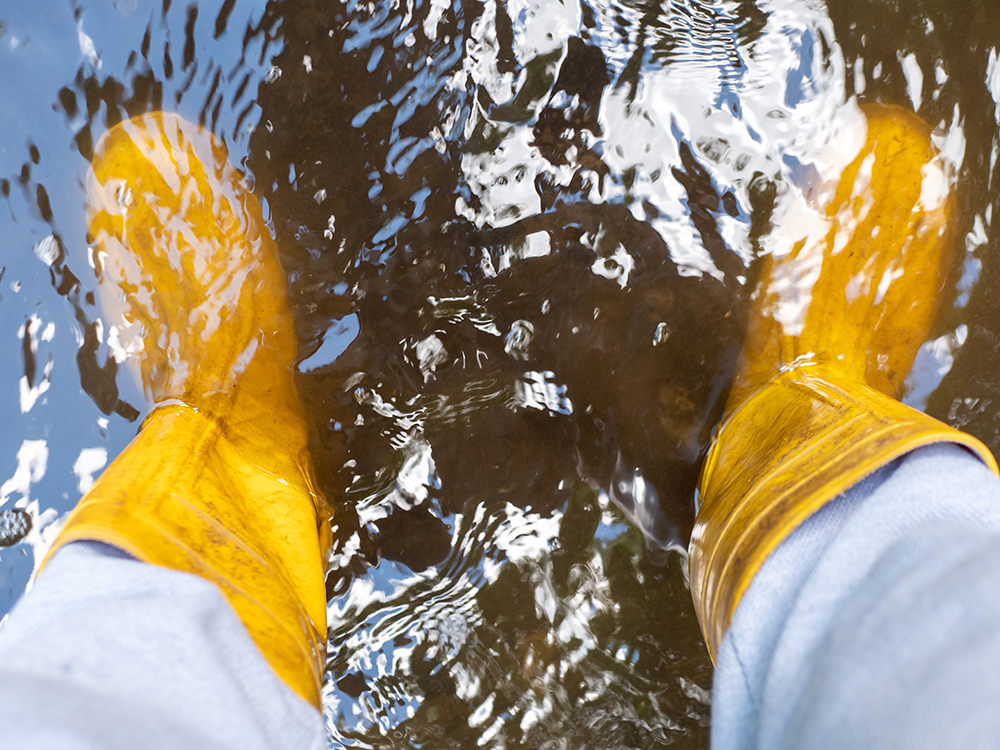Flood damage can happen without warning, and when it does, the aftermath can be extensive and unpredictable. Be informed about the pitfalls of do-it-yourself flood damage restoration, including health hazards from contaminated water and electrical dangers.
The Dangers of After-Flood Damage
The full extent of flood damage isn’t always obvious on first inspection, but the long-term effects of water devastation on a building are not always visible. A trained water restoration specialist can determine how far underneath your flooring the water has spread and how much unseen water is causing further harm to floors or your building’s foundation.
Do Not Wait Too Long Before Cleaning Up
Water damage doesn’t go away with time, in fact it worsens the longer it is left without remediation. Destruction can escalate very quickly — it only takes minutes for water-damaged wood furniture and floors to begin to swell, and within a few days paint will start to blister and bubble, and wallpaper begin to peel away. Water damage can also warp the structural supports of your building over a relatively short period of time.
Without fast action, mould and mildew will also begin to spread widely and take deep root into materials such as wood, carpet, fabric, drywall and other materials, and ruin them beyond repair. This will add the necessity of mould remediation on top of water damage restoration work.
If left untreated for long enough, water damage from flood waters can eventually lead to the complete collapse of a building as the added weight of the water and destabilized supports cause it to fall apart.
Do Not Ignore the Dangers in a Flooded Building
Floodwater can harbour a variety of hazards—some obvious, some hidden. Here is a list of factors to keep in mind if you try to do flood damage restoration yourself:
· Contamination by bacteria or sewage. There are three different categories of contaminated water after flooding, depending on the level of contamination from bacteria, sewage or other bio-hazards that can cause infections, disease and illness. Even if the floodwater is clean, the flood may have burst pipes in or around your building, so it may not remain clean for long.
· Unstable flooring. Water damaged floors may be hazardous to walk on; flooring may be softened, loosened, swollen, uneven, or completely deteriorated beyond repair.
· Broken glass and other debris. Floodwater entering your house may bring in debris from other locations. Beware of sharp metal fragments or broken glass that can cut hands, feet or legs. This is especially important when there is also water contamination, because incurring an open wound in floodwater can lead to infection.
· Loose electrical wires. Floodwaters also pose risk of electrical shock. You never know where there might be a live-current wire. In the event of a flood, turn off the power to your home and stay away from potential electrical hazards.
· Gas leaks and explosions. Flood damage may affect gas and propane lines. Turn off any gas or propane sources to minimize the risk of gas leaks and explosions.
· Displaced wildlife. Snakes, rats, and other animals that have lost their homes due to flooding and may seek shelter in your property after a flood.
Use the proper equipment for cleanup
You cannot conduct successful water damage restoration using only mops and towels. Professional water restoration technicians use advanced, specialized equipment for after-flood cleanup work.
The following is a list of some of the equipment that will help if you try and do the floodwater cleanup yourself. As you will hopefully only need to use these once, renting makes more sense than buying for most people. But remember, cleaning up water that’s visible doesn’t mean you have addressed the hidden water that may be causing unseen damage to your building and its structure.
· A wet-vac vacuum is needed to remove surface water from floors if the water coverage is not extensive.
· A heavy-duty fan is also required. You need a very powerful, purpose-built fan designed for drying out large indoor areas, or an axial fan that can air out water damage in confined spaces.
· A dehumidifier will pull moisture from the environment more thoroughly than a fan. The higher the capacity, measured in pints per day, the faster and better the results.
· An air scrubber is essential to improve the air quality of the affected building.
· An extraction tool, also known as a flood pumper, similar to a giant, turbocharged wet-vac is also a good idea. An industrial flood pumper can dispatch 50 gallons of water per minute, with the power of multiple blowers and a big tank for water storage.
· A moisture probe uses a coiled cable to help you determine where moisture is located, in places where you might not see it.
· Specialized wall and floor drying systems can help you save your hardwood floors and reduce the number of walls and ceilings requiring replacement.
Professional flood restoration specialists use professional-grade equipment, tools and processes necessary to do the job more effectively than do-it-yourself efforts using consumer-grade resources. Without the training and experience that comes from years of working in restoration services, there is more chance of missing crucial processes when trying to do it yourself.
Call in professional flood cleanup technicians as soon as possible
Contacting professional water removal and restoration services can make the critical difference in preserving your building’s integrity and safety and save you substantial costs in the long run. A do-it-yourself cleanup will not be as thorough and effective as professional water restoration to prevent support beams from rotting or stop mould from growing in your air conditioning vents.
Getting the job done right.
You can depend on the experts from ServiceMaster Restore’s local network of experienced and knowledgeable, flood damage cleanup professionals. Your after-flood cleanup will be done with advanced equipment and processes, to help restore your home or business property after the devastation of flooding.

